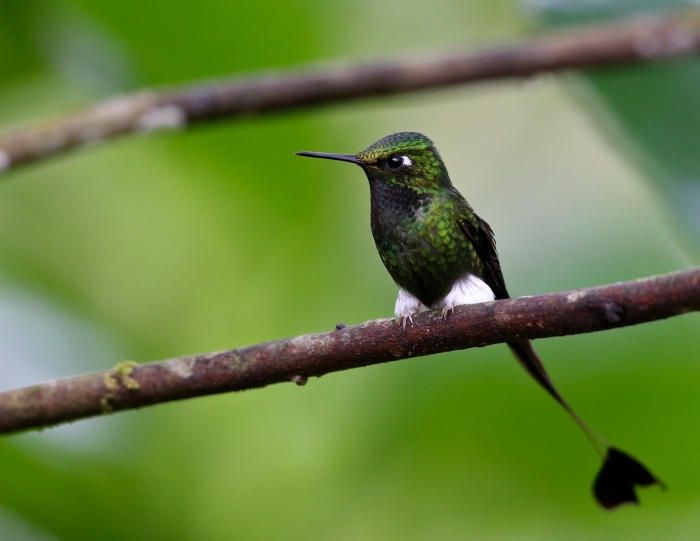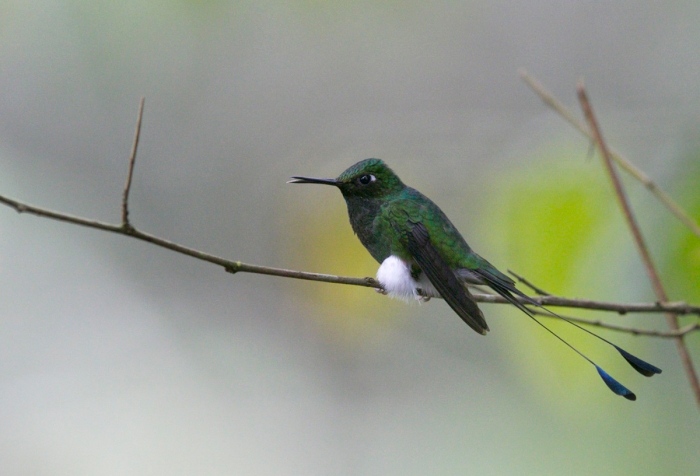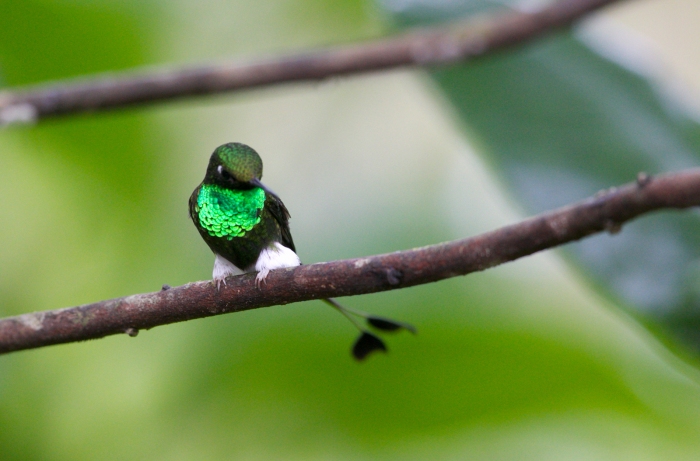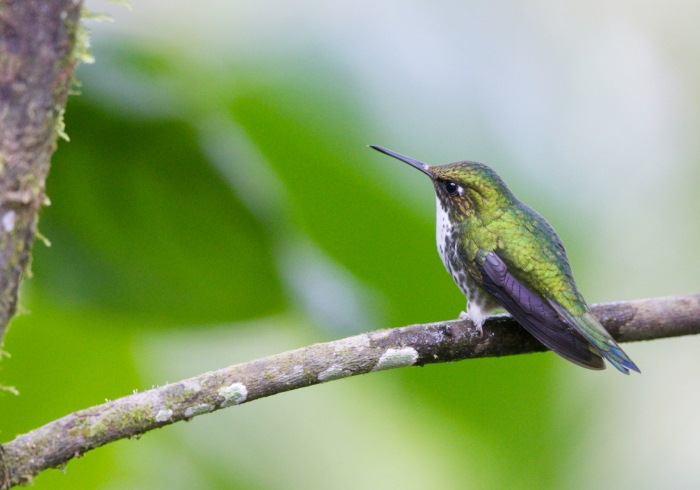Return of Bird of the Week: Booted Racket-tail
After a couple of months of raptors, it’s time for a change. And among avifauna, it’s hard to make a bigger change than to move from raptors to hummingbirds. The Western Hemisphere’s “flying jewels” are marvelous, colorful and extraordinarily varied, as WC will attempt to show over the next few months. Some of them also have pretty cool names. We’ll start with a species that checks all those boxes: the Booted Racket-tail.

Booted Racket-tail, Buenaventura Reserve, Ecuador
The first thing you notice about this species is the tail. It’s longer than the bird, and ends in a pair of “rackets,” elongated feathers tipped with blunt bluish “rackets” at the end of long, greenish central rectrices that are extended with bare rachises. It’s a tiny bird, about three inches long, with that four inch long tail.

Booted Racket-tail, Buenaventura Reserve, Ecuador
The second thing you notice are the white “boots,” technically tibial puffs. They provide a measure of insulation at an altitude of 11,000 feet where this bird was photographed.
And when the sun hits the male’s chest at the right angle, well…

Booted Racket-tail, Buenaventura Reserve, Ecuador
That remarkable, bright green chest flashes at you, without warning. Like many hummingbirds, the Booted Racket-tail is belligerent out of all proportion to its size. An Ecuadoran hummingbird feeder with Booted Racket-tails in attendance is a site of constant territorial warfare.
Like many hummingbirds, the species is sexually dimorphic. The female lacks the tail, is somewhat more drab and, away from feeders, can be difficult to see. Which is as it should be; after all, she is the one that incubates the eggs.

Booted Racket-tail Female, Buenaventura Reserve, Ecuador
The Booted Racket-tail actually demonstrated to WC that he had a bad habit when photographing birds: WC had been holding his breath when pressing the shutter. While photographing the species at something over 11,000 feet, WC passed out from lack of oxygen, falling over backwards in the mud.
An excellent species, usually fairly east to find, and one of WC’s favorites.
For more bird photographs, please visit Frozen Feather Images.